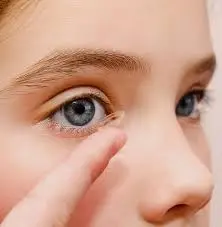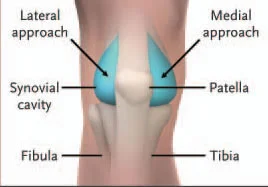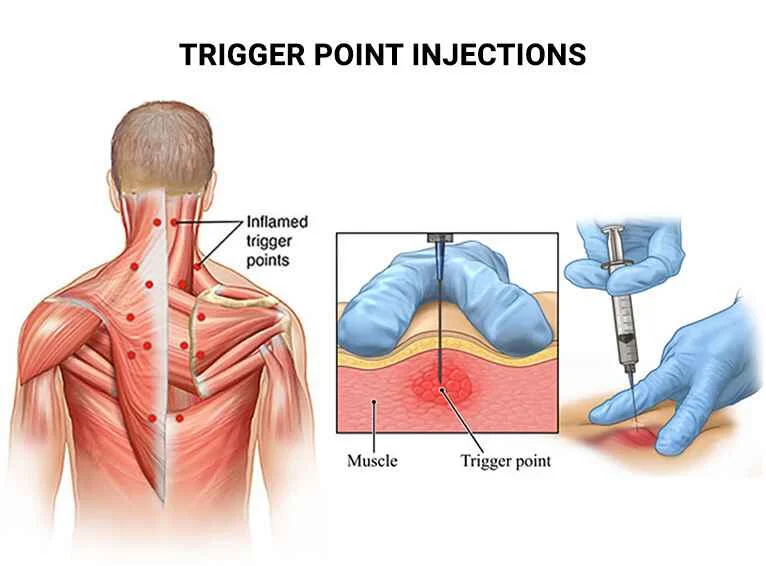Corneal Refractive Therapy(CRT)
Corneal molding, or CRT, is a technique for correcting or slowing the progression of myopia (nearsightedness) by wearing special hard contact lenses that reshape your eyes overnight, allowing you to go without glasses or contact lenses during the daytime. While CRT has a better success rate for milder vision prescriptions, harsher prescriptions can also be corrected.
According to FDA research on CRT lenses, over 65% of CRT patients achieved 20/20 vision. More than 90% of CRT patients had 20/40 vision or greater (the legal minimum for driving without vision correction in most jurisdictions).
The technique is fairly straightforward. The CRT molds are inserted before bedtime and worn while sleeping.
Throughout the night, the lenses softly restructure your cornea, ensuring perfect eyesight the next morning. The correction is only temporary, thus to retain acute visual acuity daily, you must wear the CRT reshaping lenses at night.
CRT is ideal for nearsighted persons who aren’t good candidates for vision correction surgery, such as youngsters. People of all ages with healthy eyes can try CRT. People who need vision correction and who frequently participate in sports or work in severely dusty, unclean settings may enjoy the ease of CRT.
What is corneal Refractive Therapy (CRT)?
- Corneal Refractive Therapy is a non-surgical procedure in which a therapeutic lens gradually reshapes your cornea as you sleep, temporarily correcting nearsightedness (with or without mild astigmatism).
- It allows us to adjust an individual’s eyeglass prescription without undergoing surgery on the eye. The patient sleeps with a firm, breathable contact lens that reshapes the eye’s surface. This alters the prescription, allowing the patient to see properly throughout the day without the use of contact lenses or glasses.
- CRT lenses have a similar look to conventional contact lenses. They are removed when you wake up, which typically relieves you of the need for glasses and contact lenses all day.
Who is eligible for Corneal Refractive Therapy?
- CRT is suitable for children and adults with moderate nearsightedness.
- Those who do not like to use glasses or contacts during the day.
- Those without any eye-related health concerns.
How does Corneal Refractive Therapy work?
- CRT lenses are produced from a specialized nighttime contact lens material. You will insert the lenses every night before going to bed.
- When you remove your lenses in the morning, your reshaped cornea allows light to focus on the retina properly. Consequently, you can see clearly and naturally for most of your awake hours.
- Most patients have quick improvement in the first few days of therapy and obtain their best vision within 10 to 14 days. Your lenses should be chemically cleaned after each usage. Your doctor will advise you on the optimal care method for you and when to change your lenses.
Who should not be Utilizing CRT lenses?
Individuals who show any of the following conditions should not be using CRT.
- Ocular inflammation or infection.
- Any eye illness, damage, or irregularity affecting the cornea or surrounding tissue.
- Any systemic condition that may impact the eye or get worse by wearing contact lenses.
- Allergic responses of the eyes, which can be induced or aggravated by wearing contact lenses or using contact lens solutions
- Eyes that are red, inflamed, or have significant dryness
Advantages of Corneal Refractive Therapy
- Most patients have quick improvement in the first few days of therapy and attain near-optimal vision in 10 to 14 days.
- A small number of patients will not improve sufficiently to function in all settings without extra treatment.
- CRT aims to decrease the need for corrective lenses during the day and set realistic expectations. However, we cannot promise you will get the desired results. The great majority of our patients are quite satisfied with CRT.
The advantages are significant
- Corneal Refractive Therapy provides several benefits to individuals who engage. Benefits include:
- Achieving optimal eyesight in less than two weeks.
- CRT contact lenses last two to three years.
- Lenses are simple to care for
- CRT costs around the same as having braces.
- Easily discontinued.
- slows childhood myopic progressions.
- Increased confidence due to no longer having glasses.
Adverse Effects of Corneal Refractive Therapy
- Wearing any contact lens has a modest risk. CRT lenses are not predicted to pose a higher danger than other contact lenses. Because this operation is reversible, some patients may detect alterations in their eyesight later in the day.
- The two most prevalent adverse effects for rigid contact lens wearers are corneal edema and corneal staining.
- It is expected that some Paragon CRT wearers may have similar adverse effects. Other negative effects that all contact lens wearers may experience include redness, tears, irritation, corneal abrasion, or visual distortion.
- If the contact lenses are removed as soon as possible, these problems are typically just transient.
- In very rare cases, infections of the eye, corneal ulcers, iritis, or neovascularization, corneal scarring, and irreversible vision loss can occur. Proper lens care reduces the likelihood of experiencing any negative effects.
Advice for Wearer Lenses in Corneal Refractive Therapy
Your lenses should be cleaned and disinfected immediately after each usage. We will guide you through the lens care system that is ideal for you. If you do not take adequate care of your lenses, they may need to be updated more regularly.
- Advised solution: Use every day to soak and disinfect your lenses.Clear care hydrogen peroxide or Boston Simplus Unique pH multi-purpose.
- Drops: Oasis Tears Plus, Celluvisc artificial tears, and Boston Simplus
- Apply drops to CRT lenses before inserting them and to the eyes before removing them.
- Rinsing solution options include non-preserved saline, sterile solution, or multipurpose solution.
- Enzyme cleanser: Use twice a month or as needed.
- Progent cleanser; Optimun cleanser
- Tips: Use lubricating drops before insertion and withdrawal.
- Insert CRT lenses before bedtime. Treatment should last at least 6 hours every night.
If you notice a problem with your eyesight or contact lenses, remove them immediately and consult your eye care specialist. Always follow your eye care professional’s directions for lens usage, follow-up, and lens care systems.
FAQs
How Does Corneal Refractive Therapy Work?
Corneal refractive treatment is comparable to obtaining braces in that we gradually move a component of the body (in this case the cornea rather than the teeth) to a new position. This is a far more rigorous process than a standard contact lens fitting, requiring additional certification and training.
What are the possible negative effects of Corneal Refractive Therapy?
Because this operation is reversible, some patients may detect alterations in their eyesight later in the day. The two most prevalent adverse effects for rigid contact lens wearers are corneal edema and corneal staining. It is expected that some Paragon CRT wearers may have similar adverse effects.
What is a corneal refraction?
Refraction is the bending of light rays as they travel from one object to another. The cornea and lens bend (refract) light rays, focusing them on the retina. When the shape of the eye changes, so does the way light rays bend and concentrate, which can lead to blurred vision.
Who is a candidate for CRT?
Any nearsighted patient with healthy eyes is a potential candidate for CRT.
Can children wear CRT lenses?
It was created primarily to decrease the onset of nearsightedness in children. If we begin CRT on a kid as soon as they show indications of nearsightedness, we can halt or even eliminate the unfavorable changes to their vision that occur over time.
How safe is corneal refractive therapy?
Orthokeratology, another name for corneal refractive therapy, is the process of reshaping the cornea, or front surface of the eye, with stiff air-permeable contact lenses.
How much time does it take to get a clear vision?
In the first few days of treatment, the majority of patients see noticeable improvements, and in 10 to 14 days, they almost reach their ideal vision.
How long is Corneal Refractive Therapy effective?
It’s not permanent. Your vision without the lenses will return to normal in as short as 72 hours if you stop using them while you sleep.
What is the proper way to care for my lenses?
After each use, you should immediately clean and sanitize your lenses. We will advise you on the optimal lens care regimen for you. If you do not take adequate care of your lenses, you may need to replace them more regularly.
What is the best age to get corneal refractive therapy?
Since the FDA has approved corneal refractive therapy without regard to age, it is appropriate for both children and teenagers. Occasionally, your physician may ask you to try on various CRT lenses to determine the best prescription for your ideal level of vision correction.
References
- Maria. (n.d.). Frequently Asked Questions about Corneal Refractive Therapy. Five Points Eye Care. https://www.fivepointseyecare.com/eye-care-services/orthokeratology-crt-vst/frequently-asked-questions-about-corneal-refractive-therapy/
- Metropolitan Eye Center, Metro Detroit, LASIK. (2021, December 2). Corneal Refractive Therapy (CRT) – Metropolitan Eye Center. https://www.metropolitaneyecenter.com/crt/
- CRT Frequently Asked Questions – Coppell TX | Elliott Eye Associates, PA. (2024, January 10). https://visionsource-coppell.com/vision-care-products/vision-correction/crt-frequently-asked-questions/
- Contact Lens Insertion and Removal Guide. (n.d.). EyeRis Vision. http://www.eyerisvision.com/corneal-refractive-therapy.html
- Corneal Refractive Therapy – CRT. (n.d.). https://www.accuvision.com/Content/CRTresponsive/default.aspx
- Corneal Refractive Therapy What is CRT? (n.d.). https://www.mainefamilyeyecare.com/Content/corneal_refractive_therapy/whatiscrt/whatiscrt.aspx
- Corneal Refractive Therapy What is CRT? (n.d.). https://www.mainefamilyeyecare.com/Content/corneal_refractive_therapy/whatiscrt/whatiscrt.aspx







